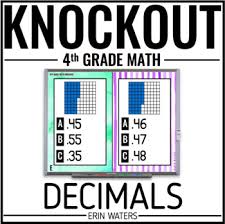
Falling Balls is a difficult game that requires skill. The Physics of gravity and timing of the ball's falling will challenge you. However, if the game is well-mastered, you'll be rewarded with a high scoring score. And, you can even win trophies by catching the falling balls!
Crumbled paper and falling balls
While there is some similarity between falling balls and crumpled papers, there are also key differences. For one thing, crumpled paper has a smaller volume than flat paper and the same mass. Crumpled paper has a higher resistance to air when it falls. This results in a slower rate of falling objects.
Due to the variety of folds in paper balls, there is no uniform structure. Although they may be unique, researchers have not seen enough crumpled paper balls to prove it. Because of this, researchers can't compare crumpled paper balls to other objects that have uniform structures, such as snowflakes, fingerprints, or dust particles.

Physics of Gravity
Gravitational forces from the earth always accelerate falling bodies. A falling ball experiences an acceleration rate of 9.8 m/s2 at a given velocity. This acceleration, also called the acceleration due gravitation, is what a falling ball experiences at a given velocity. To calculate the acceleration due to gravity, the initial velocity u=0 must be multiplied by the height h at the time t.
Gravity's acceleration can vary from one place to another depending on topography and subsurface geology. An introductory physics laboratory course can provide data that allows for a simple calculation of the acceleration. The experiment involves dropping an object (usually a metallic ball) from a height known. The fall duration can be recorded. If the measurements were taken correctly, the results are accurate.
Timing of ball's falling
It is quite simple to understand the physics behind timing of falling balls. It is the time it takes for a ball to travel from its start position to its final location. Divide the distance traveled by the ball's initial velocity to calculate how long it takes for it to fall. Divide that value by its time to fall. This equation yields s=1/2at2, where s is initial velocity and a is acceleration due to gravity.
This equation's first part is based upon a model for gravitational acceleration. We can also predict the motion for a falling ball using this model. It is possible to predict how long it will take for a ball to make contact with a target moving at constant velocity. To minimize misjudging an object's acceleration, this mechanism requires that the user constantly updates their sensory information.

Lucky to catch a ball
It has been proven that the odds of getting a catch on a baseball are different for each person. There have been many attempts at throwing the baseballs, including ones from the tops buildings like the Washington Monument at 555 feet, the Tribune Tower at 462, and Terminal Tower at 680ft. However, no one has succeeded in breaking the record since 1939, when former baseball player Joe Sprinz broke his jaw and lost a few teeth after his glove caught the ball, which travelled at 154 mph.
FAQ
What factors should I consider when choosing a major?
The first step is to decide whether you prefer to enter a particular profession straight away or attend college. Next, you need to make a list listing your talents and interests. Your interests can come from reading, listening to music, watching movies, talking to people, playing sports, working around the house, etc. You might be gifted in singing, dancing or writing. When you identify your talents and interests, you can use these to guide you in choosing a major.
Fine arts or art history might interest you if your dream is to be an artist. Biology might be a good choice if you are passionate about animals. Pre-medicine or medical technology may be an option for you if your dream is to become a physician. Computer science or computer networking might be a good choice if you are looking for a career that involves computers. There are many options. It's important to consider what you would like.
What are the types of early child education?
There are many ways that early childhood education can be described. The most common ones include:
-
Preschool - Children ages 2 to 5
-
PreKindergarten – Children aged 4-6
-
Head Start/Headstart for Children Ages 0-3
-
Day Care/ Daycares- Children aged 0-5
-
Child Care Centers - Children ages 0 to 18
-
Family Child Care - Children ages 0 to 12
-
Home Schooling - Children ages KG to 16
Are there any special skills needed for my chosen field?
If you want to become a lawyer, you'll need good written communication skills. A nurse must have the ability to communicate well. A strong understanding of math is necessary to become an accountant. These are only a few examples. Think about all the things you enjoy doing. What type of job would allow you to do these things again? To become an engineer, you will need to be able to design structures and machine. In order to excel in this area you will also need to master basic math. A basic understanding of numbers and statistics is necessary to succeed in business. Communication skills are essential for teachers and other professions. You'll need to be able to teach others and help them learn.
Statistics
- These institutions can vary according to different contexts.[83] (en.wikipedia.org)
- Globally, in 2008, around 89% of children aged six to twelve were enrolled in primary education, and this proportion was rising. (en.wikipedia.org)
- Think of the rhetorical power of nineteenth-century abolitionist Harriet Beecher Stowe, Martin Luther King, Jr., or Occupy Wall Street activists with their rallying cry of “we are the 99 percent.” (bostonreview.net)
- They are more likely to graduate high school (25%) and finish college (116%). (habitatbroward.org)
- In most developed countries, a high proportion of the population (up to 50%) now enters higher education at some time in their lives. (en.wikipedia.org)
External Links
How To
Where can I learn to become a teacher
Teaching jobs are available for public elementary schools as well as private elementary schools.
You must complete a bachelor's program at one of these institutions before you can become a teacher:
-
A four-year college/university
-
Associate's degree program
-
There are some two-year community colleges programs
-
These three types of programs can be combined
To qualify for certification for teaching positions, applicants must meet state requirements. These include passing standardized test and having a probationary period.
Most states require that all candidates pass the Praxis 2. This test tests the candidate's comprehension of reading, writing and mathematics as well as their language arts skills.
Many states require that candidates obtain a specialized license in order to be certified to teach.
These licenses will be issued by the boards of education in each state.
Some states grant licenses without the need for additional testing. If this is the case, the applicant should contact his/her state's board of education to verify.
Some states will not issue licenses to applicants who have not completed a master's program.
Some states permit individuals to apply directly at the state board or education for licensure.
There are many licenses available. They vary in cost, length, and requirements.
Some states only require a high school diploma while others require a bachelor’s degree.
Some states require training on specific topics, such literacy or child development.
Some states require applicants to hold a master's in order for them to be licensed.
Many states will ask applicants for their prior employment information when they apply to become certified teachers.
You might mention that you have worked in another field on your application.
However, almost all states will accept work experience from any type of previous job.
You might want to list your job title, previous position, and years of experience.
This information can be very helpful for potential employers.
It shows that they have relevant skills.
You may have gained valuable work experience and new skills while working.
Future employers can view your resume.